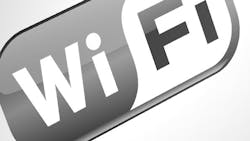What makes Wi-Fi so good is the support, promotion, and development of the Wi-Fi Alliance (WFA), a trade association of companies developing and using the standard. Its key function is testing and certifying all chips and products to ensure full compatibility and interoperability. The WFA also develops its own standards and some excellent enhancements to the standards, such as Wi-Fi Direct, HotSpot 2.0 and Passpoint, and Miracast. Typically, they’re software enhancements that can be included in standard chip sets and products.
Wi-Fi Direct is a modification of the basic standard to permit Wi-Fi enabled devices to connect with one another without going through a traditional hotspot or router. Smart phones, laptops and tablets, cameras, printers, and other Wi-Fi equipped devices then can automatically develop one-to-one communications. Many chips and devices are now enabled with Wi-Fi Direct.
HotSpot 2.0 is the WFA’s answer to linking Wi-Fi access points (APs) and eventually cellular networks. The Passpoint certifying standard provides an easier way to link up with a Wi-Fi network. It makes finding hotspots easier and enables access to them and to APs. The location and linkup of hotspots is smoother, automatic, and fully protected with Wi-Fi Protected Access 2 (WPA2) security.
The 802.11u standard enables HotSpot 2.0. It allows devices and networks to negotiate and connect automatically. The user does not have to do anything. HotSpot 2.0 and Passpoint select the best nearby AP and connect without user interaction. They permit Wi-Fi roaming and pave the way to automatic handoff for implementing cellular data offload to Wi-Fi.
Miracast is the WFA’s solution for displaying video between devices wirelessly without going through an AP. It lets Miracast-enabled devices transfer video directly such as from a laptop to a big-screen TV, a smart phone to a TV, or a laptop to a larger video monitor in a docking station. Also, a laptop screen could be sent to a projector, or a tablet could display TV from a cable set-top box. Miracast uses Wi-Fi Direct to make the connection.
About the Author

Lou Frenzel
Technical Contributing Editor
Lou Frenzel is a Contributing Technology Editor for Electronic Design Magazine where he writes articles and the blog Communique and other online material on the wireless, networking, and communications sectors. Lou interviews executives and engineers, attends conferences, and researches multiple areas. Lou has been writing in some capacity for ED since 2000.
Lou has 25+ years experience in the electronics industry as an engineer and manager. He has held VP level positions with Heathkit, McGraw Hill, and has 9 years of college teaching experience. Lou holds a bachelor’s degree from the University of Houston and a master’s degree from the University of Maryland. He is author of 28 books on computer and electronic subjects and lives in Bulverde, TX with his wife Joan. His website is www.loufrenzel.com.
